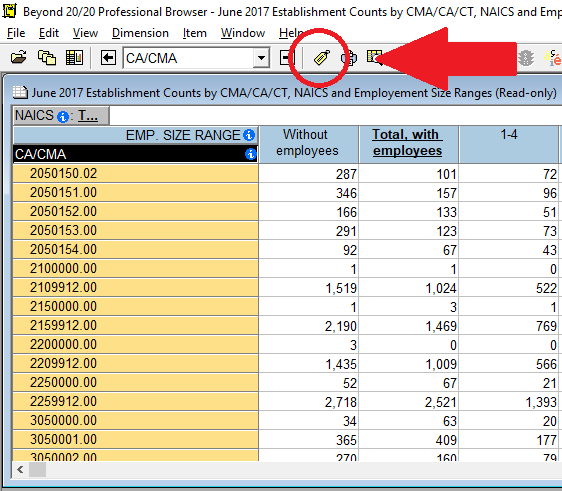Canadian business counts data provide counts of active establishments by industry classification and employment size categories. The data are compiled from the Business Register, which is a repository of information on the Canadian business population.
There are two sets of tables by employment size range:
- Business Location Counts
- Establishment Counts
The following are the employment size ranges available in the Business Register:
- 1 to 4
- 5 to 9
- 10 to 19
- 20 to 49
- 50 to 99
- 100 to 199
- 200 to 499
- 500+
Establishments without employees include the self-employed, i.e. those who do not maintain an employee payroll, but may have a workforce which consists of contracted workers, family members or business owners. These also include employers who did not have employees in the last 12 months.
Please note that establishments are assigned to employment size ranges based on employment size estimates derived from payroll remittance and profiling data. The primary purpose of the employment size data is to improve the efficiency of samples selected to conduct statistical surveys. These data should not be used in any manner to compile industry employment estimates. Employment size estimates, as grouped in employment size ranges, tend to measure the annual maximum number of employees, full time or not.
Make CT Names Visible
See image below on how to change the label on the geography dimension of the CMA/CA/CT file in order to see the CT names:

For more information, please refer to the August 17, 2023 Daily article covering the release of the June 2023 Canadian Business Counts.
Statistics Canada advises users not to use these data as a time series.
As of June 2015, this product's name has been changed from Canadian Business Patterns to Canadian Business Counts. Changes to the methodology since the December 2014 release affect the number of businesses falling into certain categories. Some changes are described below, but users can also refer to the Definitions and Concepts document for more detailed information.
See the information below on the difference between "establishments" and "locations" (taken from Definitions and Concepts used in Business Register):
Statistical Establishment
A statistical establishment is the production entity or the smallest grouping of production entities which:
- Produces a homogeneous set of goods or services;
- Does not cross provincial boundaries; and
- Provides data on the value of output together with the cost of principal intermediate inputs used along with the cost and quantity of labor resources used to produce the output.
The production entity is a physical unit where the business operations are carried out. It must have a civic address and dedicated labour.
For example, a plant in the manufacturing industry which provides accounting information regarding the value of shipments (sales), direct costs and labor costs is considered a single establishment. However, two stores in the retail industry may be considered one establishment if the accounting information, described in item (c) above, is not available separately, but is combined at a higher level.
Statistical Location
The location is an operating entity, specifically a production entity which:
- Conducts economic activity at or from a single physical location or group of locations;
- Resides within the smallest standardized geographical area;
- Is able to provide employment data at a minimum.